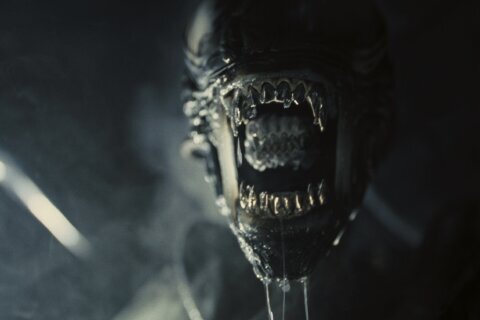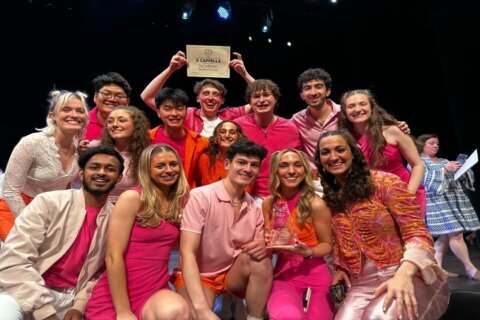WASHINGTON — The last frame we saw from filmmaker Kathryn Bigelow was in the back of a military jet where Jessica Chastain’s tenacious CIA agent shed “mission accomplished” tears after killing Osama bin Laden in Abbottabad, Pakistan, while her peer asked, “Now what?”
It was as much a question for Chastain’s character as it was for Bigelow’s career, having become the first woman to win Best Director for “The Hurt Locker” (2009) before topping many critics’ year-end best lists with the harrowing “Zero Dark Thirty” (2012). Now what?
Five years later, we get our answer in “Detroit,” as Bigelow reunites with screenwriter Mark Boal to move from foreign war zones to America’s own militarized inner cities, recalling 2Pac’s plea: “Can a brother get a little peace? There’s war in the streets and war in the Middle East.”
We open on July 23, 1967, as a late-night police raid sparks a race riot in Detroit. The chaos cuts short a Motown gig at the Fox Theater, where The Dramatics were supposed to follow Martha & The Vandellas. Bummed at the missed opportunity, singer Larry Reed (Algee Smith) and band manager Fred Temple (Jacob Latimore) return to the Algiers Motel, where two white women, Julie (Hannah Murray) and Karen (Kaitlyn Dever), invite them back to their room.
There, they meet the ladies’ associates, including trigger-happy hotshot Carl (Jason Mitchell), whose “starter pistol” draws the attention of the police, who unleash holy hell on the motel. Lining the bystanders up against a wall at gunpoint, Officer Krauss (Will Poulter) leads deputies Flynn (Ben O’Toole) and Demens (Jack Reynor) in a night of police brutality to garner a confession, as black security guard Dismukes (John Boyega) tries to diffuse the situation.
After the #OscarsSoWhite debate, “Detroit” provides a powerful platform for its young black cast, namely sympathetic leads Algee Smith and Jacob Latimore. Their fear is palpable, whether staring down Will Poulter (“The Revenant”), whose shady cop recalls Mark Fuhrman, or Jason Mitchell (“Straight Outta Compton”), whose recklessness creates an uneasy suspense we haven’t felt since Denzel dropped off Ethan Hawke to play poker in “Training Day” (2001).
The rest of the supporting cast allows familiar faces to up their game. After his role as Falcon in “The Winter Soldier” (2014), Anthony Mackie is unforgettable as Greene, a Vietnam vet who can spot National Guard uniforms. Likewise, John Boyega shows a different side to his Finn in “The Force Awakens” (2015), showing a calm resiliency amid claims of being an Uncle Tom.
Along similar lines, some cynics have griped that the white Bigelow and Boal inherently lack the ethos to tell such a black story, but by that measure, we would have never had George Stevens’ “Giant” (1956), Robert Mulligan’s “To Kill a Mockingbird” (1962), Norman Jewison’s “In the Heat of the Night” (1967) or Stanley Kramer’s “Guess Who’s Coming to Dinner” (1967).
Thus, Bigelow seeks to blunt such charges from the get-go with an opening graphics package written by Henry Louis Gates and illustrated by Jacob Lawrence, describing the “Great Migration” of white flight into the suburbs, leaving behind urban decay. It’s a similar technique to what Ben Affleck used to explain the Shah’s overthrow at the outset of “Argo” (2012).
From there, Bigelow works with cinematographer Barry Ackroyd (“The Hurt Locker”) and editor William Goldenberg (“Zero Dark Thirty”) to seamlessly blend documentary footage with narrative filmmaking. It’s the same cinema verite style that Italian neorealists used to avoid detection by Germans in Roberto Rossellini’s “Rome, Open City” (1945), though the better analogy is Gillo Pontecorvo‘s “Battle of Algiers” (1966) for its chilling tie to the Algiers Motel.
For most of Act One, the atmosphere feels like we’ve been dropped in a war zone. “Looks like ‘Nam,” says a civilian, suggesting he left one battlefield overseas to enter another back home. But unlike Spike Lee’s wild satire “Chi-Raq” (2015), Bigelow and Boal thankfully play it straight.
The real genius of Boal’s script is that he avoids a cookie-cutter tale of oppression boasting stereotypical black-and-white heroes and villains. Instead, he presents a series of logical misunderstandings escalating with plausible motivations. On the civilian side, we’re horrified that the police would mistake a 4-year-old girl for a sniper. On the police side, it makes sense that cops would raid the motel after Carl fires at them (toy gun or not, that’s a death wish).
Only after establishing this moral code can Boal reveal the dark flaws within these characters in Act Two, where a Molotov cocktail of fear, mistrust and outright racism culminate in a travesty of police brutality. We watch in horror as the cops launch a “Death Game” that spirals out of control with some of the most intense gun barrels since “The Deer Hunter” (1978). In other less assured hands, it would play like a snuff film. Under Bigelow, it’s intensely nuanced.
Our fear turns to anger as Bigelow shifts to the courtroom aftermath of Act Three, where defense attorney Auerbach (John Krasinski) embodies the legal dodges that too often pass for justice. The necessity of this final chapter is debatable at 143 minutes. Boal should have either (A) used the trial as a framing device throughout the film, or (B) scrapped it entirely, cutting to black after the Algiers Motel and using “where are they now” credits for maximum outrage.
Either way, there is no closure for a wound so fresh. Consider the scene where Congressman John Conyers Jr. (Laz Alonso) insists “change is coming,” an obvious reference to future President Barack Obama, but the crowd shouts for a more militant alternative: “We want Stokely Carmichael!” That same rage burns in today’s riots after each police shooting. We can only wonder what would’ve happened if the folks at the Algiers Motel had cellphone cameras.
In the end, we’re left with the senselessness of it all, epitomized by the heartbreaking scene of Smith wistfully singing to an empty music hall, having missed his big break forever due to a violent event that robbed him from his will to sing for the masses. It ain’t fair, as The Roots sing in the eponymous end credits song, which could be this year’s version of John Legend and Common’s Oscar-winning song “Glory” in “Selma” (2014), with similarly urgent lyrics:
It’s hard when you’re looking for love — and it ain’t there.
Or try to read what tomorrow holds — when it ain’t clear.
Because the well is running dry,
Race tension is running high,
Under 21 is far too young to die.









